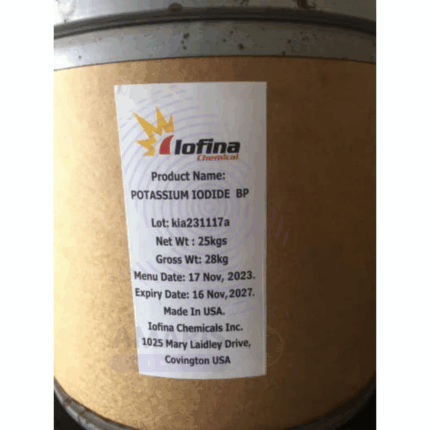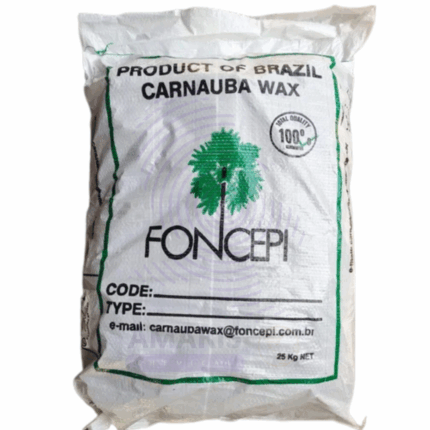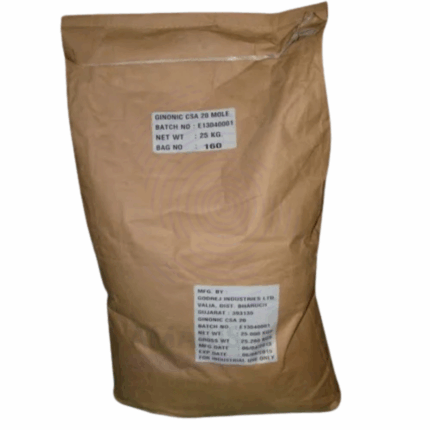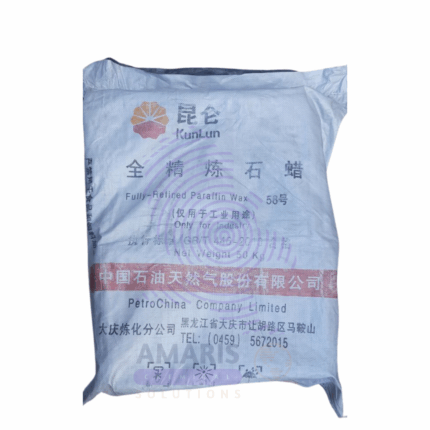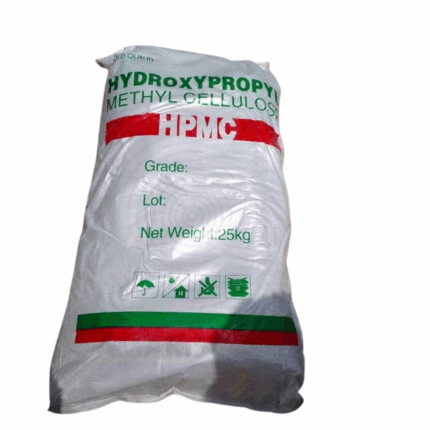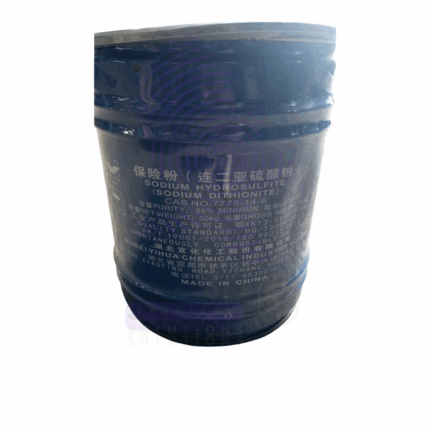
Cocodiethanolamide (CDEA)
Cocodiethanolamide (CDEA) is a viscous, amber to dark brown liquid derived from the reaction of coconut oil fatty acids with diethanolamine. It is a non-ionic surfactant and foam stabilizer commonly used in personal care and cleaning products. CDEA enhances foam quality, viscosity, and skin conditioning properties in formulations. Due to its excellent emulsifying and thickening abilities, it is widely used as a secondary surfactant to boost the performance of primary detergents. It is valued for its biodegradability, mildness, and compatibility with various surfactants and other ingredients in cosmetics and industrial formulations.
Cocodiethanolamide (CDEA) Uses
Primary Uses
- Personal Care & Cosmetics
- Used extensively as a foam booster and viscosity builder in shampoos, body washes, bubble baths, and facial cleansers.
- Acts as a conditioning agent that helps soften and moisturize the skin and hair.
- Functions as an emulsifier and stabilizer in creams, lotions, and hair conditioners to improve texture and shelf life.
- Provides mild cleansing and enhances the sensory feel of personal care products without irritation.
- Household & Industrial Cleaning Products
- Employed as a foam stabilizer and thickening agent in liquid hand soaps, dishwashing liquids, and surface cleaners.
- Improves the wetting and emulsification of oily soils in detergents.
- Enhances cleaning efficiency while maintaining gentle skin compatibility.
Secondary Uses
- Textile Industry
- Used as a wetting and emulsifying agent in textile processing and finishing operations.
- Helps in lubricating and softening fibers during fabric treatment.
- Agricultural Formulations
- Incorporated in pesticide and herbicide formulations as an emulsifier and surfactant to improve dispersion and adherence on plant surfaces.
- Industrial Applications
- Utilized as an additive in metal cleaning and degreasing formulations for enhanced emulsification of oils and greases.
Acts as a lubricant in various industrial processes.
1. Basic Identification Attributes
- Chemical Name (IUPAC): N-(2-Hydroxyethyl)-N-(2-hydroxyethyl)coco fatty acid amide
- Common/Trade Name: Cocodiethanolamide (CDEA)
- CAS Number: 68603-42-9
- HS Code: 3402.13.00
- Molecular Formula: Variable mixture (mainly C18H37NO3 and related compounds)
- Synonyms:
- Coconut Diethanolamide
- Cocamide DEA
- Diethanolamide of coconut fatty acids
2. Physical & Chemical Properties
- Physical State: Viscous liquid
- Color & Odor: Amber to dark brown; mild fatty odor
- Melting Point: Not applicable (liquid at room temp)
- Boiling Point: >200°C (decomposes)
- Density: ~1.01 g/cm³ at 25°C
- Solubility:
- Soluble in water, alcohols, and glycol ethers
- Miscible with many surfactants and solvents
- pH (1% solution): 9–11 (alkaline)
- Stability: Stable under normal storage conditions
3. Safety & Hazard Attributes
- Hazard Class (GHS): Not classified as hazardous under normal use
- NFPA Ratings:
- Health: 1 (mild irritant)
- Flammability: 1
- Reactivity: 0
- Exposure Limits: No specific limits established; avoid inhalation and prolonged skin contact
- Toxicity: Generally considered low toxicity; mild skin irritant in concentrated form
- Reactivity: Stable; avoid strong oxidizing agents
4. Storage & Handling Attributes
- Storage Conditions: Store in a cool, dry place away from direct sunlight and heat sources
- Container Type: HDPE drums or plastic containers with tight seals
- Shelf Life: 12–24 months if stored properly
- Special Handling: Use gloves and eye protection to avoid skin/eye contact during handling
5. Regulatory & Compliance Attributes
- FDA Status: Approved for use in cosmetics and personal care products within regulatory limits
- REACH Status: Registered and compliant
- Transportation: Not classified as hazardous
- Waste Disposal: Dispose of according to local environmental regulations; biodegradable
6. Environmental & Health Impact
- Ecotoxicity: Low toxicity to aquatic organisms at typical use concentrations
- Persistence: Biodegradable under aerobic conditions
- Bioaccumulation: Not expected to bioaccumulate
- Carcinogenicity/Mutagenicity: No evidence of carcinogenic or mutagenic effects
Biodegradability: Readily biodegradable
-
Safety Handling Precautions
Personal Protective Equipment (PPE):
- Wear chemical-resistant gloves and safety goggles during handling
- Use protective clothing to prevent prolonged skin contact
Handling Measures:
- Avoid inhalation of vapors or mist
- Work in well-ventilated areas
Storage Measures:
- Keep containers tightly closed when not in use
- Avoid exposure to heat or direct sunlight
Hygiene Practices:
- Wash hands thoroughly after handling
- Do not eat, drink, or smoke in the handling area
First Aid Measures
- Inhalation: Move to fresh air; seek medical advice if symptoms persist
- Skin Contact: Wash affected area with plenty of water and soap; seek medical help if irritation develops
- Eye Contact: Rinse eyes immediately with water for at least 15 minutes; seek medical attention
- Ingestion: Do not induce vomiting; rinse mouth and seek medical advice immediately
Firefighting Measures
- Fire Hazards: Combustible liquid; emits toxic fumes when heated or burned
- Extinguishing Media: Use foam, dry chemical, or CO₂ extinguishers
- Special Precautions: Firefighters should wear full protective gear and self-contained breathing apparatus
- Decomposition Products: May emit carbon oxides, nitrogen oxides, and other toxic gases on burning


 Preservatives(food)
Preservatives(food) Flavor Enhancers
Flavor Enhancers Acidulants
Acidulants Sweeteners
Sweeteners Antioxidants
Antioxidants Colorants(food)
Colorants(food) Nutraceutical Ingredients (food)
Nutraceutical Ingredients (food) Nutrient Supplements
Nutrient Supplements Emulsifiers
Emulsifiers
 Collectors
Collectors Dust Suppressants
Dust Suppressants Explosives and Blasting Agents
Explosives and Blasting Agents Flocculants and Coagulants
Flocculants and Coagulants Frothers
Frothers Leaching Agents
Leaching Agents pH Modifiers
pH Modifiers Precious Metal Extraction Agents
Precious Metal Extraction Agents
 Antioxidants(plastic)
Antioxidants(plastic) Colorants (Pigments, Dyes)
Colorants (Pigments, Dyes) Fillers and Reinforcements
Fillers and Reinforcements Flame Retardants
Flame Retardants Monomers
Monomers Plasticizers
Plasticizers Polymerization Initiators
Polymerization Initiators Stabilizers (UV, Heat)
Stabilizers (UV, Heat)
 Antifoaming Agents
Antifoaming Agents Chelating Agents
Chelating Agents Coagulants and Flocculants
Coagulants and Flocculants Corrosion Inhibitors
Corrosion Inhibitors Disinfectants and Biocides
Disinfectants and Biocides Oxidizing Agents
Oxidizing Agents pH Adjusters
pH Adjusters Scale Inhibitors( water)
Scale Inhibitors( water)
 Antioxidants(cosmetic)
Antioxidants(cosmetic) Emollients
Emollients Fragrances and Essential Oils
Fragrances and Essential Oils Humectants
Humectants Preservatives
Preservatives Surfactants(cosmetic)
Surfactants(cosmetic) Thickeners
Thickeners UV Filters
UV Filters
 Fertilizers
Fertilizers Soil Conditioners
Soil Conditioners Plant Growth Regulators
Plant Growth Regulators Animal Feed Additives
Animal Feed Additives Biostimulants
Biostimulants Pesticides (Herbicides, Insecticides, Fungicides)
Pesticides (Herbicides, Insecticides, Fungicides)
 Active Pharmaceutical Ingredients (APIs)
Active Pharmaceutical Ingredients (APIs) Excipients
Excipients Solvents(pharmaceutical)
Solvents(pharmaceutical) Antibiotics
Antibiotics Antiseptics and Disinfectants
Antiseptics and Disinfectants Vaccine Adjuvants
Vaccine Adjuvants Nutraceutical Ingredients (pharmaceutical)
Nutraceutical Ingredients (pharmaceutical) Analgesics & Antipyretics
Analgesics & Antipyretics
 Analytical Reagents
Analytical Reagents Solvents(lab)
Solvents(lab) Chromatography Chemicals
Chromatography Chemicals Spectroscopy Reagents
Spectroscopy Reagents microbiology-and-cell-culture-reagents
microbiology-and-cell-culture-reagents Molecular Biology Reagents
Molecular Biology Reagents Biochemical Reagents
Biochemical Reagents Inorganic and Organic Standards
Inorganic and Organic Standards Laboratory Safety Chemicals
Laboratory Safety Chemicals Specialty Laboratory Chemicals(Special Laboratory Equipment)
Specialty Laboratory Chemicals(Special Laboratory Equipment)
 Demulsifiers
Demulsifiers Hydraulic Fracturing Fluids
Hydraulic Fracturing Fluids Scale Inhibitors(oil)
Scale Inhibitors(oil) Surfactants(oil)
Surfactants(oil) Drilling Fluids
Drilling Fluids
 Dyes and Pigments
Dyes and Pigments Bleaching Agents
Bleaching Agents Softening Agents
Softening Agents Finishing Agents
Finishing Agents Antistatic Agents
Antistatic Agents
 Admixtures
Admixtures Waterproofing Agents
Waterproofing Agents Sealants and Adhesives
Sealants and Adhesives Curing Compounds
Curing Compounds Concrete Repair Chemicals
Concrete Repair Chemicals Anti-Corrosion Coatings
Anti-Corrosion Coatings
 Surfactants(cleaning)
Surfactants(cleaning) Builders
Builders Enzymes
Enzymes Solvents (Cleaning)
Solvents (Cleaning) Fragrances
Fragrances
 Electronic Chemicals
Electronic Chemicals Catalysts
Catalysts Lubricants
Lubricants Photographic Chemicals
Photographic Chemicals Refrigerants
Refrigerants Automotive chemicals
Automotive chemicals Pyrotechnic Chemicals
Pyrotechnic Chemicals
 Biodegradable Surfactants
Biodegradable Surfactants Bio-based Solvents
Bio-based Solvents Renewable Polymers
Renewable Polymers Carbon Capture Chemicals
Carbon Capture Chemicals Wastewater Treatment Chemicals
Wastewater Treatment Chemicals
 Pigments
Pigments Solvents(paint)
Solvents(paint) Specialty Coatings
Specialty Coatings Binders/Resins
Binders/Resins Additives
Additives Driers
Driers Anti-Corrosion Agents
Anti-Corrosion Agents Functional Coatings
Functional Coatings Application-Specific Coatings
Application-Specific Coatings
 Fresh Herbs
Fresh Herbs Ground Spices
Ground Spices Whole Spices
Whole Spices Spice Blends
Spice Blends Dried Herbs
Dried Herbs
 Leavening Agents
Leavening Agents Dough Conditioners
Dough Conditioners Flour Treatments
Flour Treatments Fat Replacers
Fat Replacers Decoratives
Decoratives Preservatives(baking)
Preservatives(baking)
 Plasticizers & Softeners
Plasticizers & Softeners Reinforcing Agents
Reinforcing Agents Adhesion Promoters
Adhesion Promoters Vulcanizing Agents
Vulcanizing Agents Antidegradants
Antidegradants Blowing Agents
Blowing Agents Fillers & Extenders
Fillers & Extenders Accelerators & Retarders
Accelerators & Retarders
